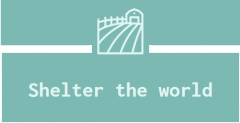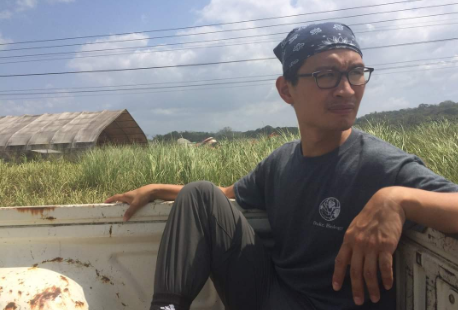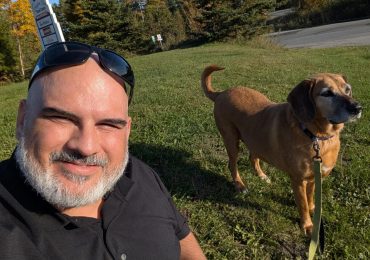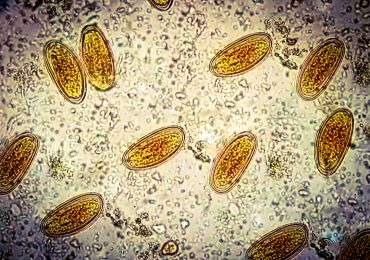In this blog post, we hear from Associate Editor Chi-Yun Kuo, Associate Professor at Kaohsiung Medical University. Chi-Yun’s primary research interests are in understanding how animals can modify their behaviours as they interact with the environment and how such behavioural changes can alter population and community dynamics. The current research focus of his group is to examine how visual-based associative learning in predators might determine the abundance and persistence of prey communities, using colourful, chemically defended butterflies and their avian predators as the study system.
Why did you choose to study your particular research area?
I’ve always been fascinated with animal behaviour. I realized early on that seeing animals doing their things in nature gave me more satisfaction than sitting on a bench pipetting chemicals. Studying behaviour also offers a wonderful mixture of working indoors on a computer and being out in the field under an open sky. Earlier on, I was simply intrigued by how diverse and flexible behaviours can be – an animal can readily change how it performs a certain behaviour based on the circumstances; individuals of the same species may perform the same behaviour in subtly, and sometimes drastically, different ways; one can even trace the changes in behaviour as species and lineages evolve. All these things that fascinate me are all at the core of behavioural ecology, so naturally I found myself becoming a behavioural ecologist. As I advanced in my career and matured intellectually, I started thinking more about the evolutionary implications of behavioural diversity, even when the question at hand is not a directly evolutionary one.
What current questions in ecology do you hope to address?
There is this paradox about the diversity of warning signals within communities that is still unresolved. In short, theory predicts that warningly coloured, unprofitable prey in the same community should evolve to resemble one another because, on the one hand, this benefits predators by reducing the number of signals that they must learn to avoid; on the other hand, all prey that share the same appearance also share the mortality cost incurred from educating naïve predators. This explains why Müllerian mimicry exists. However, the convergence of warning signals would also mean that eventually there should be one warning signal in any community of warningly colored prey, because selection is expected to eliminate all but the most common signal. But in lots of places, we see both signal convergence (Müllerian mimicry) and diversity (multiple distinct signals coexisting at a location). There are a few possible explanations for this, and my group is working to test them with warningly coloured butterflies.
What is one of the biggest challenges you have faced in your career?
Right after a fairly successful PhD I did two consecutive postdocs, during which, things didn’t work out well. The first postdoc was on a multi-lab, interdisciplinary grant with very open-ended research questions. I spent the first year or so trying to come up with good research questions and identify suitable study systems. As we zeroed in on the questions and the system, I realized that tackling these questions at hand required expertise in physics and engineering that I simply didn’t have. So I left the position.
My next postdoc offered a really exciting and promising career prospect, as the project was about finding out the genes responsible for visual mate preference in tropical butterflies. It went smoothly during the first year, but one of the focal species were very hard to find and challenging to raise at the time. As we used more and more butterflies for required breeding, the stock crashed, and I spent the next year and a half trying to revitalize the stock. And then COVID happened, which brought much of the world to a standstill. These four and a half years were the biggest challenge I’ve ever faced, because during that time I did not publish a single paper as a primary author. I was unemployed and didn’t really have any options, so I returned to my home country, thinking that the prosepct of an academic career was all but gone. But I stuck it out. Luckily, things started to turn around soon afterwards. I eventually landed my current position that allowed me to keep pursuing a career in science and doing the things I love.
What is next for your research?
One future direction for behavioural ecology is to establish the connection between things that happen at the individual level and those that happen beyond it. I think it would be really interesting to explore further, both theoretically and empirically, how behavioural variation occurring as a response to the environment can have population- and community-level consequences. Of course what we may find would depend much on the type of behaviour, but looking at the impacts on the nature of selection and the type of functional responses would be great intermediate processes that help bridge the gap between individuals and communities.
Why Functional Ecology and how do you find being an Associate Editor?
One significant merit of Functional Ecology is its identity as a society journal and its broad scope. I also really appreciate the Special Features that centre around a particular topic in ecology. This might not be a journal that behavioural ecologists check out on a regular basis, but many of my colleagues in other fields of ecology have high regards for this journal.
The main benefit is that I get to contribute to the peer review process that I have been benefitting from since grad school, and for a society journal that I myself have published in. Besides, being an Editor has helped me grow as a scientist by allowing me to hone my skills in evaluating other people’s work critically and fairly. Coincidentally, this has also been a challenge at times, because it is not always easy or straightforward to decide whether a manuscript has a broad enough appeal and should be sent out for review.
Evaluating other people’s work has helped me develop a more concrete standard for my own work as well. When I design an experiment or write a manuscript, I now have a better ability to think like a critic, and this has helped me to recognize potential weaknesses and pitfalls and avoid them.
Any common mistakes you see? How might these be addressed?
I have seen a fair number of papers in which correlation was interpreted as proof for causation. Even though this seems like an easy mistake to avoid/be mindful of, I think sometimes people get tunnel vision when they work on a project and become so locked in about particular hypotheses that they forget to take a step back.
What do you think are some of the biggest challenges in the field of ecology and what one thing would you change?
This is not directly related to what I do, but a big challenge right now is figuring out how species might respond to climate change. There are a lot of studies out there, and all are informative in their own right. But this is such a multidimensional and complicated question, and one that we need to tackle very quickly, that I am not really sure if we still have enough time to learn enough about what is to come. If I could change one thing about the field of ecology it would be that I wish all journals would do double-blind review.
Any submissions you would like to see more of or advice for early career researchers?
I would personally like to see more papers that combine theory and empirical data in the same study, regardless of the specific questions or fields in ecology. I think this is a powerful approach that should be used more often.
Remember to take a step back and think about all possible reasons, not just the one that you feel the most passionate about or know the most about, that could lead to the phenomenon you are interested in. Read “Strong Inference: certain systematic methods of scientific thinking may produce much more rapid progress than others”, an article by John R. Platt published in Science in 1964 and take what he preached to heart!
Leave a comment





